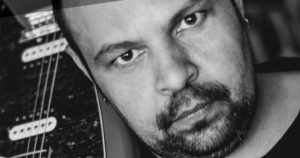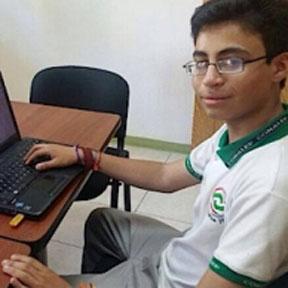
Venganza de los Dioses
Revenge of the Gods
(Photo) California’s proposed ethnic studies curriculum urges students to chant to the Aztec deity of human sacrifice.
(Foto) El plan de estudios de estudios étnicos propuesto en California insta a los estudiantes a cantarle a la deidad azteca del sacrificio humano.
La próxima semana, el Departamento de Educación de California votará sobre un nuevo plan de estudios de estudios étnicos en todo el estado que aboga por la “descolonización” de la sociedad estadounidense y eleva el simbolismo religioso azteca, todo al servicio de una ideología política de izquierda.
El nuevo programa, llamado Currículo Modelo de Estudios Étnicos, busca extender el dominio cultural de la izquierda del sistema universitario público de California, 50 años en desarrollo, a todo el sistema de educación primaria y secundaria del estado, que consiste en 10,000 escuelas públicas que atienden a un total de 6 millones de estudiantes.
En términos teóricos, el nuevo currículo de estudios étnicos se basa en la “pedagogía de los oprimidos,” desarrollada por el teórico marxista Paolo Freire, quien argumentó que los estudiantes deben ser educados sobre su opresión para lograr una “conciencia crítica” y, en consecuencia, desarrollar la capacidad de derrocar a sus opresores. Siguiendo esta dialéctica, el plan de estudios modelo instruye a los maestros a ayudar a los estudiantes a “desafiar las creencias racistas, intolerantes, discriminatorias, imperialistas / coloniales” y criticar “la supremacía blanca, el racismo y otras formas de poder y opresión.” Este enfoque, a su vez, permite a los profesores inspirar a sus alumnos a participar en “movimientos sociales que luchan por la justicia social” y “construir nuevas posibilidades para una sociedad de racismo post-racista y post-sistémico.”
R. Tolteka Cuauhtin, el copresidente original del Modelo de Currículo de Estudios Étnicos, desarrolló gran parte del material sobre la historia temprana de Estados Unidos. En su libro Rethinking Ethnic Studies, que se cita a lo largo del plan de estudios, Cuauhtin sostiene que Estados Unidos se fundó sobre una base “eurocéntrica, supremacista blanca (racista, anti-negra, anti-indígena), capitalista (clasista), patriarcal (sexista y misógino), heteropatriarcal (homofóbico) y paradigma antropocéntrico traído de Europa.” El documento afirma que los blancos comenzaron a “apoderarse de la tierra,” “incubar jerarquías.” y “desarrollar para Europa / blancura,” lo que creó un “exceso de riqueza” que “se convirtió en la base de la economía capitalista.”
Los blancos establecieron una “hegemonía” que continúa hasta nuestros días, en la que las minorías son sometidas a “socialización, domesticación y ‘zombificación’.”
La narrativa religiosa es aún más inquietante. Cuauhtin desarrolló un “mandala” relacionado afirmando que los cristianos blancos cometieron “teocidio” contra las tribus indígenas, matando a sus dioses y reemplazándolos con el cristianismo. Los colonos blancos establecieron así un régimen de “colonialidad, deshumanización y genocidio,” caracterizado por el “borrado explícito y el reemplazo de la indigeneidad y la humanidad holísticas.” La solución, según Cuauhtin y el currículo de estudios étnicos, es “nombrar, hablar, resistir y transformar la condición neocolonial eurocéntrica hegemónica” en una postura de “resistencia transformadora.” El objetivo final es “descolonizar” la sociedad estadounidense y establecer un nuevo régimen de “contragenocidio” y “contrahegemonía,” que desplazará a la cultura cristiana blanca y conducirá a la “regeneración del futuro epistémico y cultural indígena.”
Este concepto religioso se concreta en el “canto comunitario de estudios étnico” oficial del plan de estudios modelo. El plan de estudios recomienda que los maestros guíen a sus estudiantes en una serie de canciones, cánticos y afirmaciones indígenas, incluida la “Afirmación In Lak Ech”, que apela directamente a los dioses aztecas. Los estudiantes primero aplauden y cantan al dios Tezkatlipoka, a quien los aztecas tradicionalmente adoraban con sacrificios humanos y canibalismo, pidiéndole el poder de ser “guerreros” por la “justicia social.” A continuación, los estudiantes cantan a los dioses Quetzalcoatl, Huitzilopochtli y Xipe Totek, buscando “epistemologías curativas” y “un espíritu revolucionario.” Huitzilopochtli, en particular, es la deidad azteca de la guerra e inspiró cientos de miles de sacrificios humanos durante el dominio azteca. Finalmente, el canto llega a su clímax con una petición de “liberación, transformación [y] descolonización”, después de lo cual los estudiantes gritan “¡Panche beh! ¡Panche beh! “ en la búsqueda de la máxima “conciencia crítica.”
Los cánticos tienen una clara implicación: el desplazamiento del dios cristiano, que se dice que es una extensión de la opresión supremacista blanca, y la restauración de los dioses indígenas al lugar que les corresponde en la cosmología de la justicia social. Es, en un sentido filosófico, una venganza de los dioses.
Los padres de California deberían estar preocupados. Bajo el disfraz de “equidad” y “empoderamiento,” los activistas dentro del sistema de educación pública han desarrollado este nuevo plan de estudios radical con el fin de transformar las escuelas de California en fábricas para el activismo político de izquierda. Han reformulado a Estados Unidos como una nación opresora que debe ser deconstruida y subvertida a través de la política. La declaración de visión del plan de estudios hace explícito este objetivo: presenta la educación no como un medio para lograr la competencia, sino como una “herramienta para la transformación, el cambio social, económico y político, y la liberación.”
El elemento religioso del plan de estudios de estudios étnicos, con apelaciones directas a los dioses aztecas, es casi con certeza una violación de la Cláusula de Establecimiento de la Primera Enmienda. Las escuelas públicas tienen prohibido dirigir oraciones cristianas autorizadas por el estado; Presumiblemente, también se les prohibiría dirigir cánticos sancionados por el estado al dios azteca del sacrificio humano.
La junta de educación estatal votará sobre este plan de estudios la próxima semana. Cualquier organismo de gobierno en su sano juicio lo rechazaría por completo. Sin embargo, dada la naturaleza de la política de California, es probable que la junta la apruebe. La mejor esperanza para los oponentes es tachar algunos de los materiales más irritantes, como los cánticos a los dioses aztecas, y luego diseñar una estrategia a largo plazo para hacer retroceder al sistema de educación pública. Por ahora, los activistas parecen estar impulsando la narrativa, y no se detendrán hasta que hayan solidificado su “contrahegemonía.”
Revenge of the Gods
Next week, the California Department of Education will vote on a new statewide ethnic studies curriculum that advocates for the “decolonization” of American society and elevates Aztec religious symbolism—all in the service of a left-wing political ideology.
The new program, called the Ethnic Studies Model Curriculum, seeks to extend the Left’s cultural dominance of California’s public university system, 50 years in the making, to the state’s entire primary and secondary education system, which consists of 10,000 public schools serving a total of 6 million students.
In theoretical terms, the new ethnic studies curriculum is based on the “pedagogy of the oppressed,” developed by Marxist theoretician Paolo Freire, who argued that students must be educated about their oppression in order to attain “critical consciousness” and, consequently, develop the capacity to overthrow their oppressors. Following this dialectic, the model curriculum instructs teachers to help students “challenge racist, bigoted, discriminatory, imperialist/colonial beliefs” and critique “white supremacy, racism and other forms of power and oppression.” This approach, in turn, enables teachers to inspire their pupils to participate in “social movements that struggle for social justice” and “build new possibilities for a post-racist, post-systemic racism society.”
R. Tolteka Cuauhtin, the original co-chair of the Ethnic Studies Model Curriculum, developed much of the material regarding early American history. In his book Rethinking Ethnic Studies, which is cited throughout the curriculum, Cuauhtin argues that the United States was founded on a “Eurocentric, white supremacist (racist, anti-Black, anti-Indigenous), capitalist (classist), patriarchal (sexist and misogynistic), heteropatriarchal (homophobic), and anthropocentric paradigm brought from Europe.” The document claims that whites began “grabbing the land,” “hatching hierarchies,” and “developing for Europe/whiteness,” which created “excess wealth” that “became the basis for the capitalist economy.” Whites established a “hegemony” that continues to the present day, in which minorities are subjected to “socialization, domestication, and ‘zombification.’”
The religious narrative is even more disturbing. Cuauhtin developed a related “mandala” claiming that white Christians committed “theocide” against indigenous tribes, killing their gods and replacing them with Christianity. White settlers thus established a regime of “coloniality, dehumanization, and genocide,” characterized by the “explicit erasure and replacement of holistic Indigeneity and humanity.” The solution, according to Cuauhtin and the ethnic studies curriculum, is to “name, speak to, resist, and transform the hegemonic Eurocentric neocolonial condition” in a posture of “transformational resistance.” The ultimate goal is to “decolonize” American society and establish a new regime of “countergenocide” and “counterhegemony,” which will displace white Christian culture and lead to the “regeneration of indigenous epistemic and cultural futurity.”
This religious concept is fleshed out in the model curriculum’s official “ethnic studies community chant.” The curriculum recommends that teachers lead their students in a series of indigenous songs, chants, and affirmations, including the “In Lak Ech Affirmation,” which appeals directly to the Aztec gods. Students first clap and chant to the god Tezkatlipoka—whom the Aztecs traditionally worshipped with human sacrifice and cannibalism—asking him for the power to be “warriors” for “social justice.” Next, the students chant to the gods Quetzalcoatl, Huitzilopochtli, and Xipe Totek, seeking “healing epistemologies” and “a revolutionary spirit.” Huitzilopochtli, in particular, is the Aztec deity of war and inspired hundreds of thousands of human sacrifices during Aztec rule. Finally, the chant comes to a climax with a request for “liberation, transformation, [and] decolonization,” after which students shout “Panche beh! Panche beh!” in pursuit of ultimate “critical consciousness.”
The chants have a clear implication: the displacement of the Christian god, which is said to be an extension of white supremacist oppression, and the restoration of the indigenous gods to their rightful place in the social justice cosmology. It is, in a philosophical sense, a revenge of the gods.
California parents should be concerned. Under the guise of “equity” and “empowerment,” activists within the public education system have developed this radical new curriculum in order to transform California schools into factories for left-wing political activism. They have recast the United States as an oppressor nation that must be deconstructed and subverted through politics. The curriculum’s vision statement makes this aim explicit: it presents education not as a means of achieving competency, but as a “tool for transformation, social, economic, and political change, and liberation.”
The religious element of the ethnic studies curriculum, with direct appeals to Aztec gods, is almost certainly a violation of the First Amendment’s Establishment Clause. Public schools are prohibited from leading state-sanctioned Christian prayers; they would presumably be similarly prohibited from leading state-sanctioned chants to the Aztec god of human sacrifice.
The state board of education will vote on this curriculum next week. Any sane governing body would reject it wholesale. Given the nature of California politics, though, the board is likely to pass it. The best hope for opponents is to strike out some of the most galling material, such as the chants to the Aztec gods, and then devise a long-term strategy to push back against the public education establishment. For now, the activists appear to be driving the narrative—and they will not stop until they have solidified their “counterhegemony.”
























